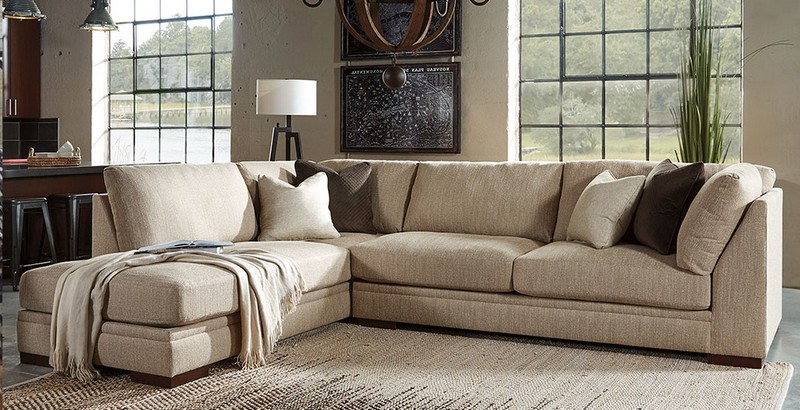The sofa is the most important furniture in the living room everyone must accommodate. It can be said a living room is not a living room if there is no sofa in it. This way, you have to accommodate the best sofa for your living room, but you cannot be too careless in choosing the best sofa for your living room. A living room sofa must be comfortable enough for both family and guests. The living room is the place where you and your family have family time or just relaxing and chilling together. Therefore, a living room sofa must be chosen carefully.
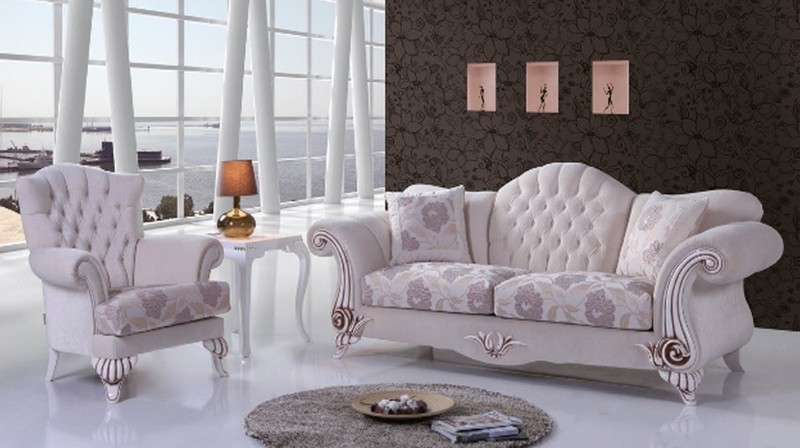
The Type of Sofa
Before going on some tips on buying a living room sofa, you need to know some common type of sofas. By knowing the type, you can understand which type suits your living room better. Different type of sofas will result in different vibes and atmosphere of your living room.
The most common type of sofa is a loveseat. A loveseat is the best option of living room sofa if you have a small living room. It is often sold as a matching piece with any kinds of couches. If you just live with your partner or you live alone but want to have a sofa for the guest, a loveseat might be your better choice. It holds up to two people. The fun fact is that the loveseats made their debut in the late 1700s. Now they become very popular.
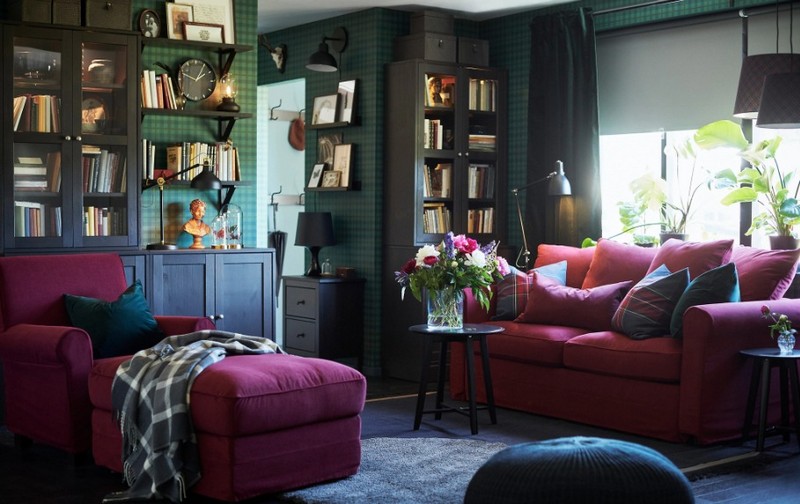
The other type is best for a larger family. There is a sectional or modular sofa. This type is actually a combination of smaller sofas which is combined in different configurations and sizes. A sectional sofa is often in L-shaped. This configuration provides more flexibility in arranging the other furniture. This type of living room sofa can be arranged to suits the number of your family member. In addition, in some cases, a sectional sofa is handier in a compact space. It is because the furniture arrangement will be less linear.
The last is the type that can be used as an extra bed, a sofa bed. A sofa bed is basically just like any other type in appearance. What makes it different is the part under the cushions can be unfolded into a full-sized bed. This type is good if you live in a small house with or without a guest room. The sofa bed can be used as a bed for your overnight guest. You do not have to worry anymore about making your guests comfortable when they sleep in your place.
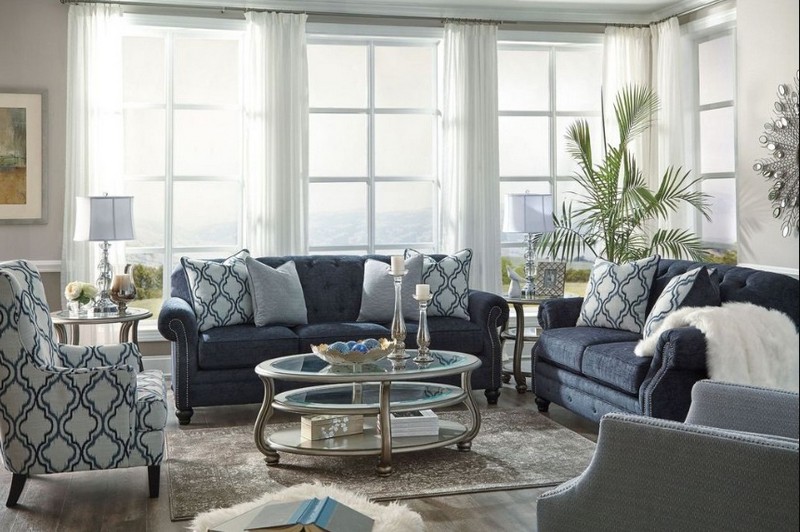
What to consider before buying
Knowing the types, now you are ready to read the tips and guidelines before choosing a living room sofa for your house. The first thing you need to consider is the size. Picking up the right side of the sofa is the most important thing to do first. You can do this by looking at your living room, and decide how much space you want the sofa to occupy. Do keep in mind that a living room does not only contain a sofa but also other furniture. You might have a couch, coffee table, or other furniture to arrange in your living room. Do not let your sofa occupy too much space on your room, you may have trouble in arranging other furniture. Besides, the size of your living room sofa will determine the convenient of your living room.
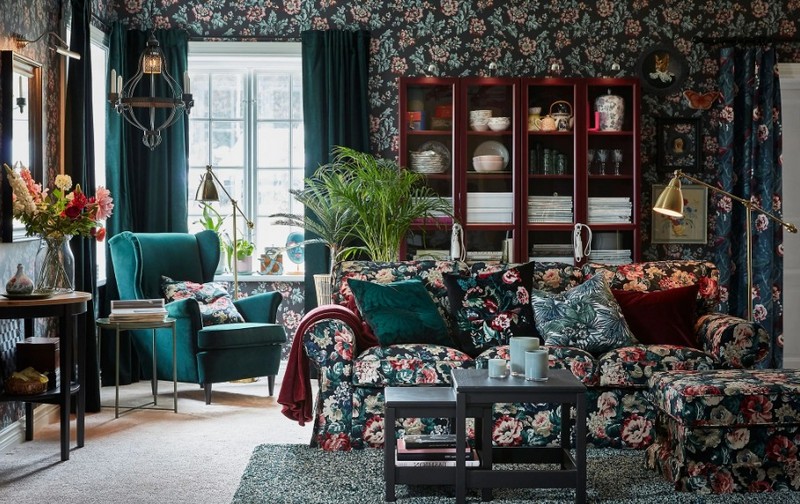
The next thing is to determine how the sofa will be placed and faced. When you have known the right side of the sofa, you have to think about how the sofa will be oriented. To give you some advice, if you spend much time on the TV, then putting the living room sofa in front of it is the obvious answer. However, if you enjoy having a talk with your guests, it a good idea to put the sofa in front of the fireplace of facing the bar if you have any. It will create a cozy lounge area for you and your guest to have a talk, whether it is serious or just for entertainment. Do keep in mind that putting the sofa in front of the fireplace in a narrow room will make the room even narrower.

The next step is choosing the shape. Well, it only applies when you have a large living room. L-shaped is the most favorite shape in arranging the living room sofa. If you have much space for the sofa to occupy, perhaps arranging a semi-circle or circle around the coffee table is a good idea. For people who do not have a large room, do not be a worry. You can also experiment and arrange your sofa by picking up the smaller ones. Perhaps using a couch will be better instead of using a sofa because a couch takes up less space.
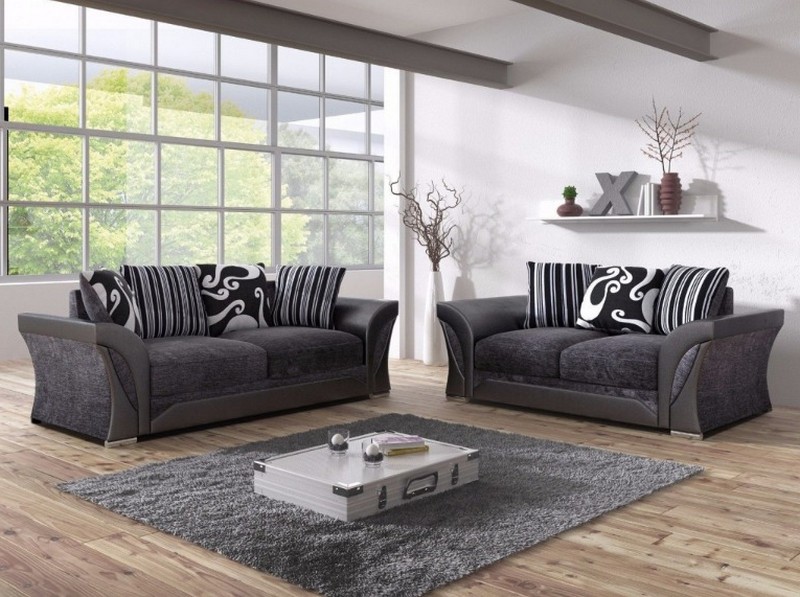
The last thing is picking up both the color and the pattern for your living room sofa. The color and the pattern of your sofa must be compatible and matched with your other living room furniture. The sofa must not be the subject matter of your living room. Therefore, choosing a very bold color is not recommended since it will draw too much attention. Choosing trendy patterns might be a bad idea if it is not compatible with your room’s vibe, atmosphere, or your other furniture. The sofa cannot be the stand-alone furniture, it has to be friendly with other furniture; meaning that along with other furniture, they will give the same vibes and atmosphere for your living room.

Though choosing a living room sofa looks like an easy task, there are lots of things to consider and think before deciding to buy one. There are also lots of variety of options in choosing a living room sofa besides what has been mentioned in this article. However, you still need to consider the same things before having the best living room sofa for your house.
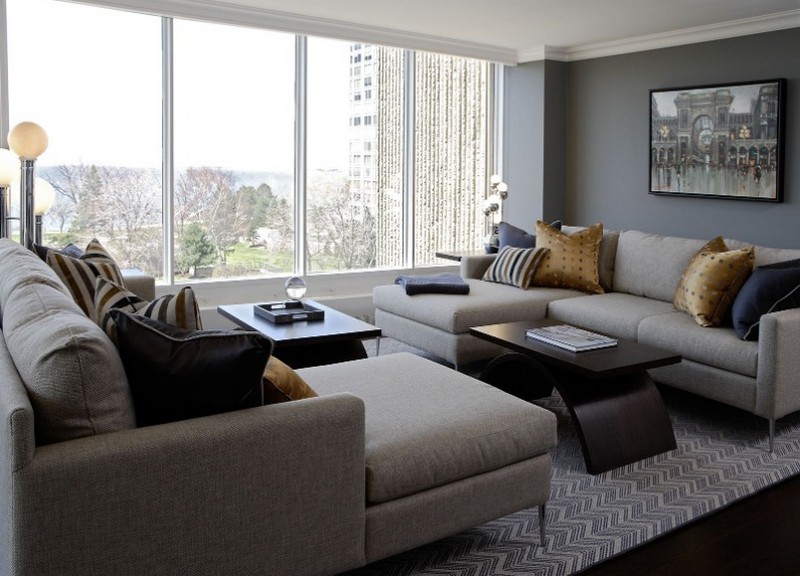
Reasons why the sofa is the most crucial piece of furniture
Consider one thing, anything, in a typical living room… Yes, we’re envisioning a sofa too.
Some furniture pieces possess the ability to change the atmosphere. The sofa is one of these magical, space-altering design items. It’s not just because they take up the most space or the appealing way they look; it’s about how they affect our emotions and behavior. The sofa embodies calmness and relaxation. It’s dedicated to comfort, relaxation, and winding down – a physical expression of personal time, our time, downtime, and nap time.
The presence of a sofa brings the rest of the living area together. The sofa necessitates an armchair or two. Then they require a rug. Following that, a coffee table is needed. What about a floor lamp? The sofa is the starting point; it pulls items around it into a grouping, functioning as an anchor for the entire room, serving as the focal point around which everything else revolves and draws energy from.
Join us as we explore the sometimes unexpected reasons that sofas are so uniquely influential within the home, and the many roles the modern sofa plays. We’ll delve into the emotion embedded in the cushions and upholstery, and discover how these seemingly straightforward pieces of furniture can shape our daily routines, host our most intimate conversations, and serve as supportive witnesses to our unfolding lives.
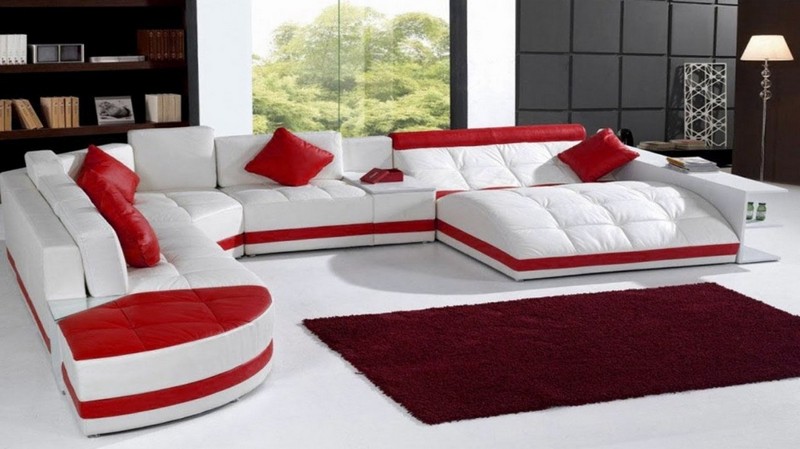
Sofas Enhance Style and Personality
As the largest furniture item in a living room – a substantial upholstered piece – the sofa naturally attracts attention. It contributes significantly to the look and feel and can set the tone for the area’s overall style. The color, upholstery, and decorative choices of the modern sofa can be the defining elements that bring a space to life – contemporary, colorful designs exuding modernity and energy, while classic forms in neutral palettes exude timeless elegance and sophistication.
Design and shape are equally as important as the upholstery, with curves, angles, legs, arms, and backs all conveying the style and story of the piece. These structural foundations can convey a sense of formality or familiarity, indicating whether to snuggle up and get cozy or sit upright for a formal conversation, and turn the sofa into a beautiful sculptural object as well as a practical seating piece.
Pay attention to details like the legs, trim, and stitching, as these small yet significant touches often contribute to a high-quality, luxurious feel, serving as evidence of the craftsmanship that went into creating the piece, as well as enhancing the design’s overall appearance to give the seat a unique and luxurious edge.
Sofas invite a finishing touch for that extra something. A modern sofa doesn’t feel complete without a selection of decorative cushions or a cozy throw placed within reach. Whether they are in colors, patterns, or textures that complement the body of the sofa and/or the room as a whole, or in contrasting styles, these little embellishments not only add visual interest but also a personal touch to the piece making your sofa stylish, characterful, and truly one-of-a-kind.

Sofas Shape the Room’s Layout
As the primary focal point in a room, a sofa’s placement significantly influences the overall layout of the space and determines where people naturally gather. Whether positioned against a wall or floating in the center, a sofa’s placement directs where people walk through the room as well as defining how light and air flow. The sofa also plays a key role in floor plans, as its large size enables it to divide rooms and create internal zones for various activities including living, dining, cooking, or working. Other living room furniture adjusts to the sofa, arranged according to where it first settles. Supporting pieces, such as coffee tables, side tables, and lighting, follow and complement the sofa’s placement, building on it to create a balanced, functional space.
The sofa’s orientation guides sitters’ attention to different views such as guests on the other side of the room, spots of natural light, or focal points like fireplaces, artwork, or the latest must-watch on Netflix. It’s not just about where you sit or what you’re sitting on; It’s not just about where you sit or what you’re sitting on; it’s about the universe the sofa invites you to explore without getting up.
Now, the important question – should the sofa be placed against the wall or positioned freely within the room? It all depends on the size of the space and the goals you’re aiming for. A setup against the wall can create a cozy, secure ambiance, while a floating arrangement helps define open space and promotes a feeling of fluidity.

Sofas Are Mega Versatile
The evolution of the sofa from a formal seating solution to a multi-functional everyday furniture piece has led to increased demands. It should be an area for relaxation and comfort, as well as provide back and arm support and sleeping options. Storage should be easily accessible and possibly integrated. The sofa should be cozy and cooling, create personal space, and bring people together. The modern sofa is incredibly versatile, with modular designs gaining popularity due to their customizable nature. These designs can be rearranged and adapted to suit different spaces and functions. Interchangeable modules including hard surfaces, storage, footstools, and various shaped arms or backs can be added to meet evolving needs. Sofas now offer a wide variety of styles, colors, textures, materials, and patterns to suit different interiors, with interchangeable elements such as legs and cushions.
Sofas Form A Social Hub
When entertaining guests, the most welcoming and practical place to gather is on a comfortable and inviting sofa. The sofa’s primary function is to provide relaxed seating for multiple individuals in a pleasant environment. Its large cushions and soft upholstery naturally create a focal point for socializing, encouraging longer and more enjoyable conversations. Whether positioned alongside armchairs or designed asymmetrically to prompt intimate discussions and shared moments, sofas facilitate face-to-face interactions and group leisure activities. They create a warm and inviting atmosphere that serves as a central point for family and friends, fostering connections and memories.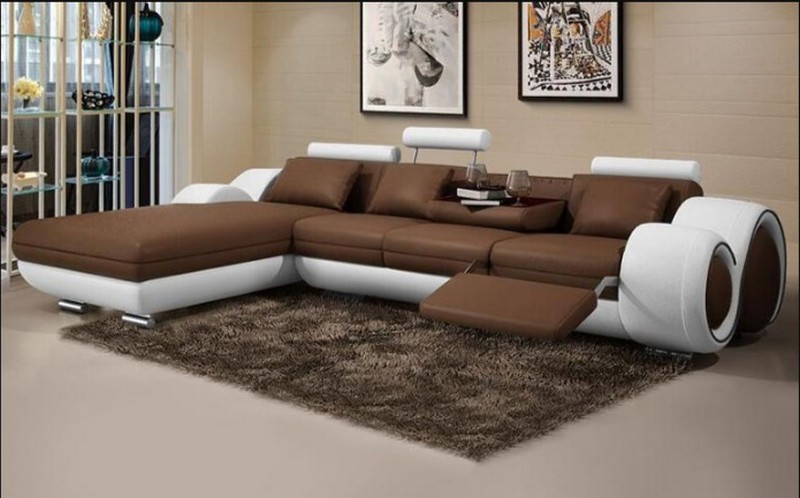
Sofas Are Symbolic
The sofa represents comfort and relaxation, symbolizing a sanctuary within a home. It’s a place to retire from the daily stresses and unwind, providing a compact sanctuary for rejuvenation. Representing family, friendship, and intimacy, the symbolic significance of a sofa is linked to connection and welcoming others into the home. It represents moments of bonding and the memories created. As an investment piece of furniture, the sofa is a statement of its owner’s taste and aesthetic vision, serving as a distinctive and personal fusion of form and function. It’s not just a seat; it’s a powerful symbol of personal style and design identity.
